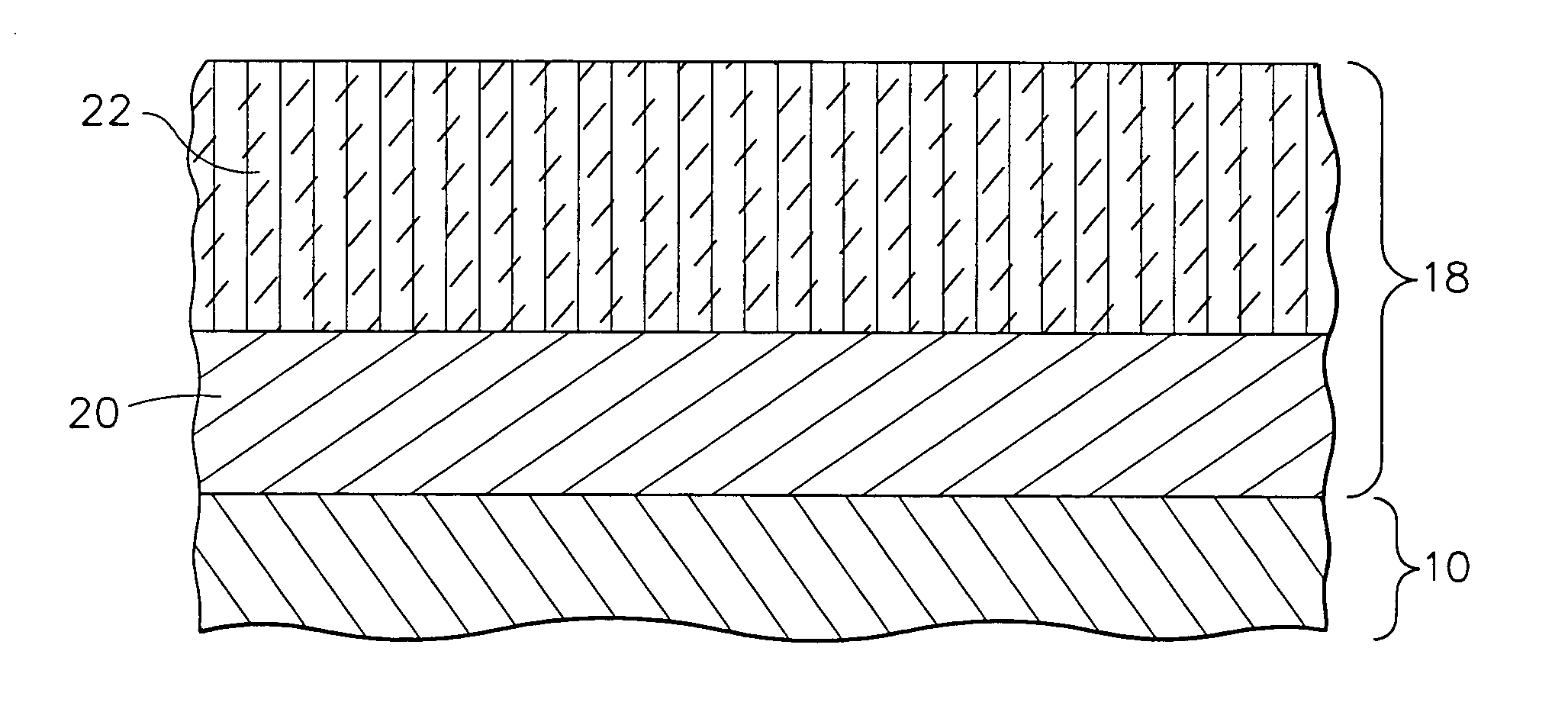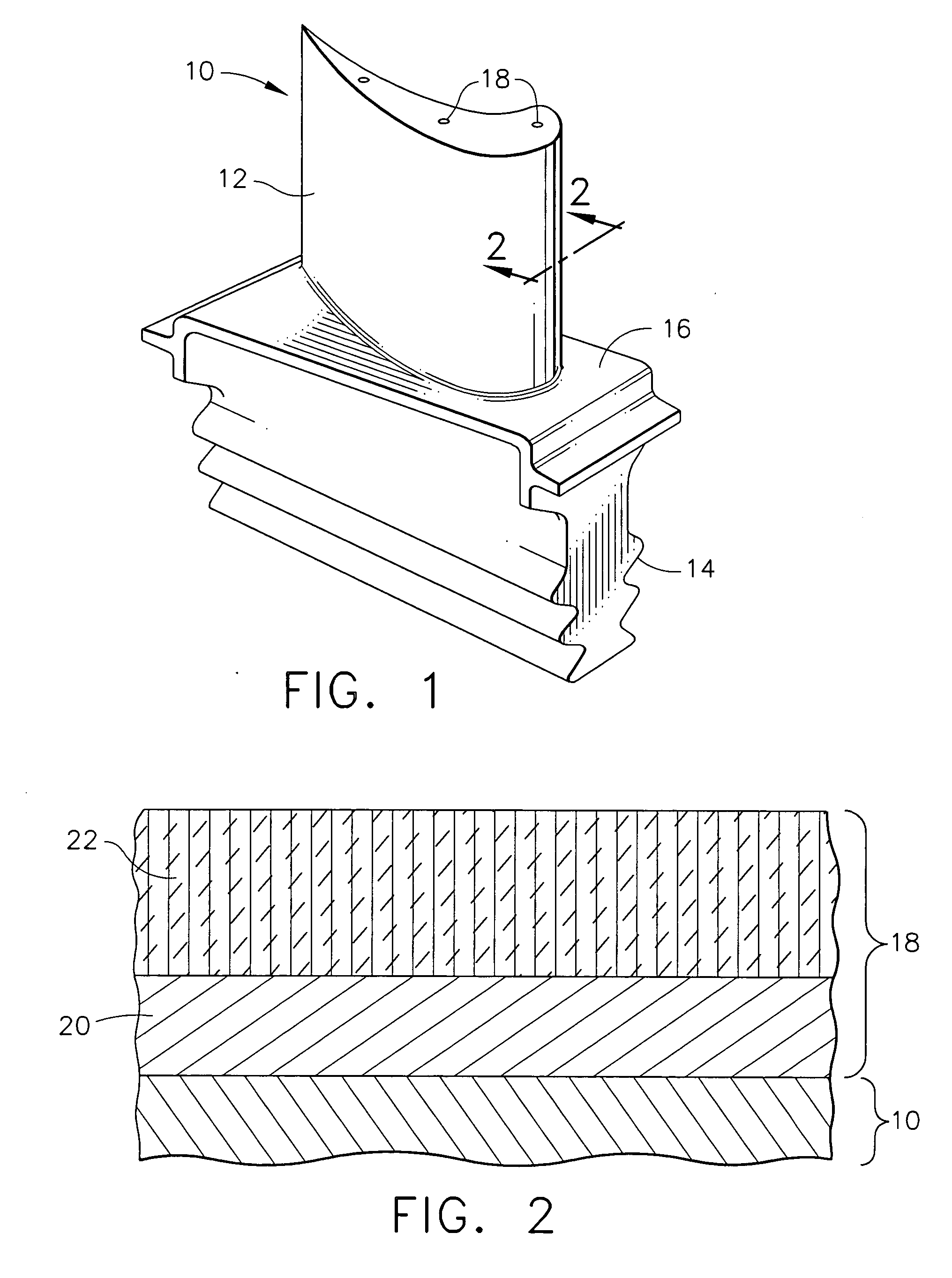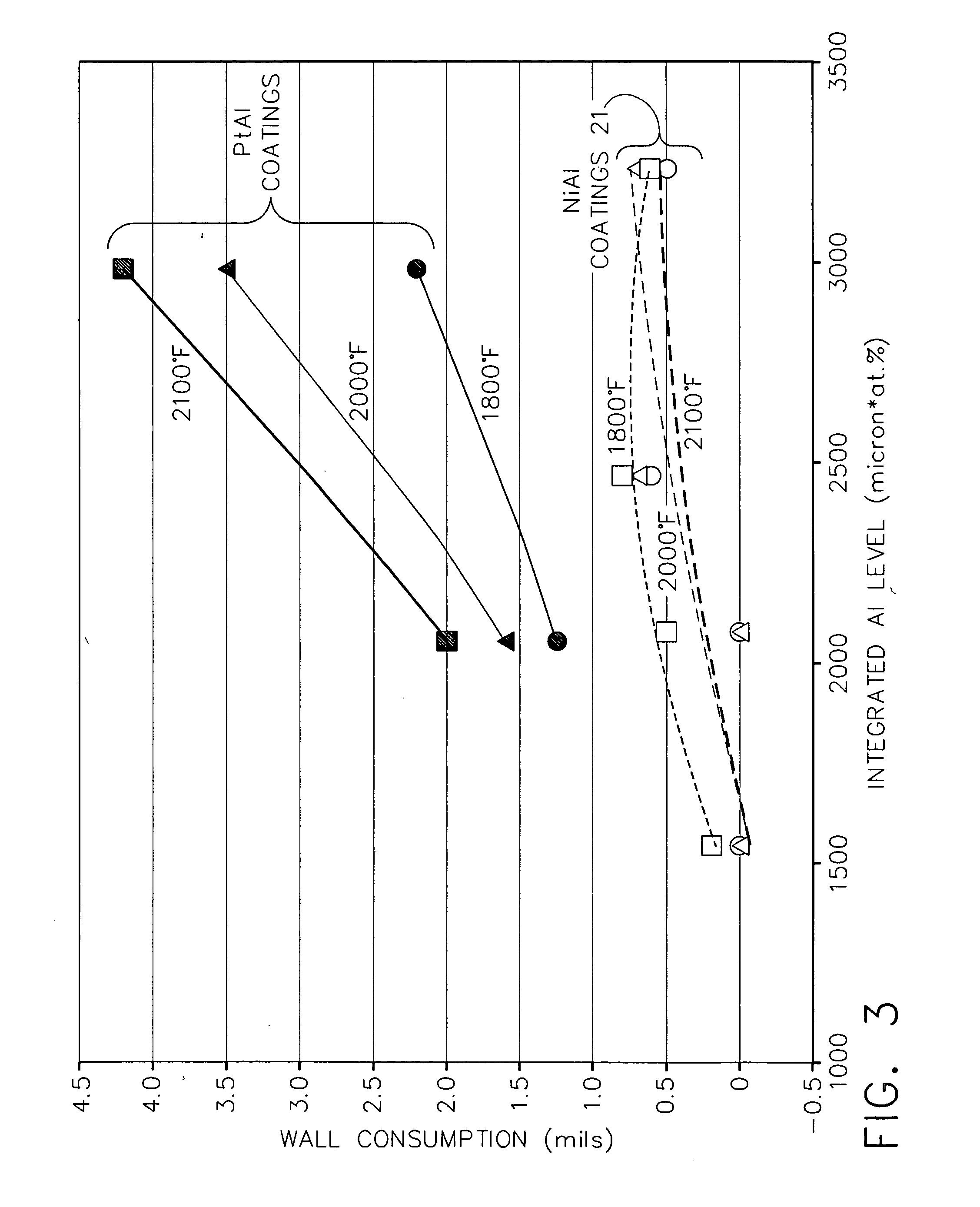Method for repairing components using environmental bond coatings and resultant repaired components
a technology of environmental bond coating and component, applied in the field of components, can solve the problems of component loss of critical dimension, growth of environmental coating, and special requirements, and achieve the effects of reducing thickness, extending component life, and increasing repairability
- Summary
- Abstract
- Description
- Claims
- Application Information
AI Technical Summary
Benefits of technology
Problems solved by technology
Method used
Image
Examples
Embodiment Construction
[0015] The repair method of the present invention is generally applicable to components that operate within environments characterized by relatively high temperatures, and are therefore subjected to severe thermal stresses and thermal cycling. Notable examples of such components include the high and low pressure turbine nozzles and blades, shrouds, combustor liners and augmentor hardware of gas turbine engines. Other examples include airfoils, in general, and static parts such as vanes. One particular example is the high pressure turbine blade 10 shown in FIG. 1. For convenience, the method of the present invention will be described in the context of repairing blade 10. However, one skilled in the art will recognize that the method described below may be readily adapted to repairing any other gas turbine engine part coated with an environmental bond coat, with or without an overlying ceramic layer 22. Accordingly, as used herein, bond coat or environmental bond coat does not require...
PUM
| Property | Measurement | Unit |
|---|---|---|
| thickness | aaaaa | aaaaa |
| thickness | aaaaa | aaaaa |
| thickness | aaaaa | aaaaa |
Abstract
Description
Claims
Application Information
 Login to View More
Login to View More - R&D
- Intellectual Property
- Life Sciences
- Materials
- Tech Scout
- Unparalleled Data Quality
- Higher Quality Content
- 60% Fewer Hallucinations
Browse by: Latest US Patents, China's latest patents, Technical Efficacy Thesaurus, Application Domain, Technology Topic, Popular Technical Reports.
© 2025 PatSnap. All rights reserved.Legal|Privacy policy|Modern Slavery Act Transparency Statement|Sitemap|About US| Contact US: help@patsnap.com



